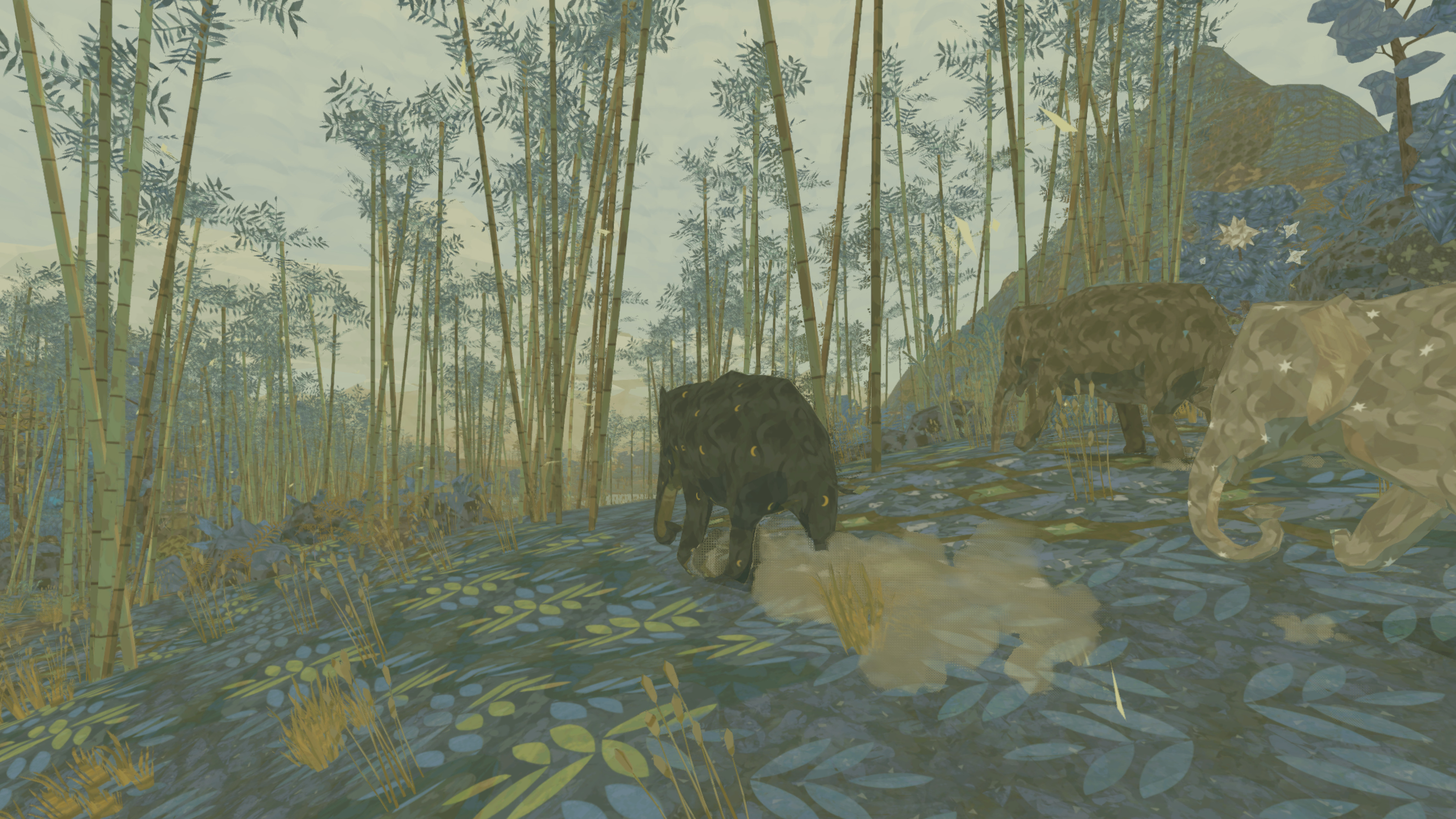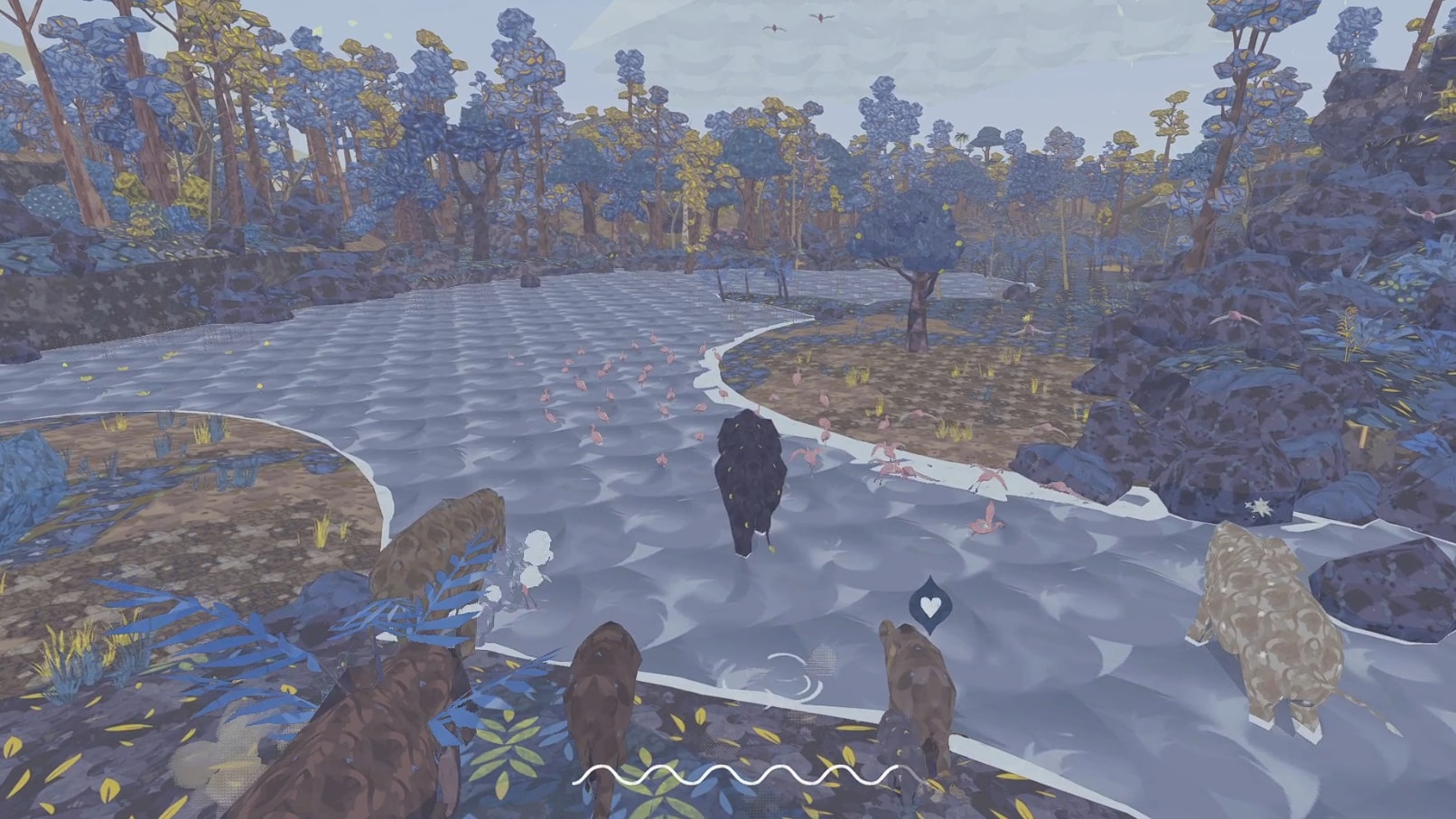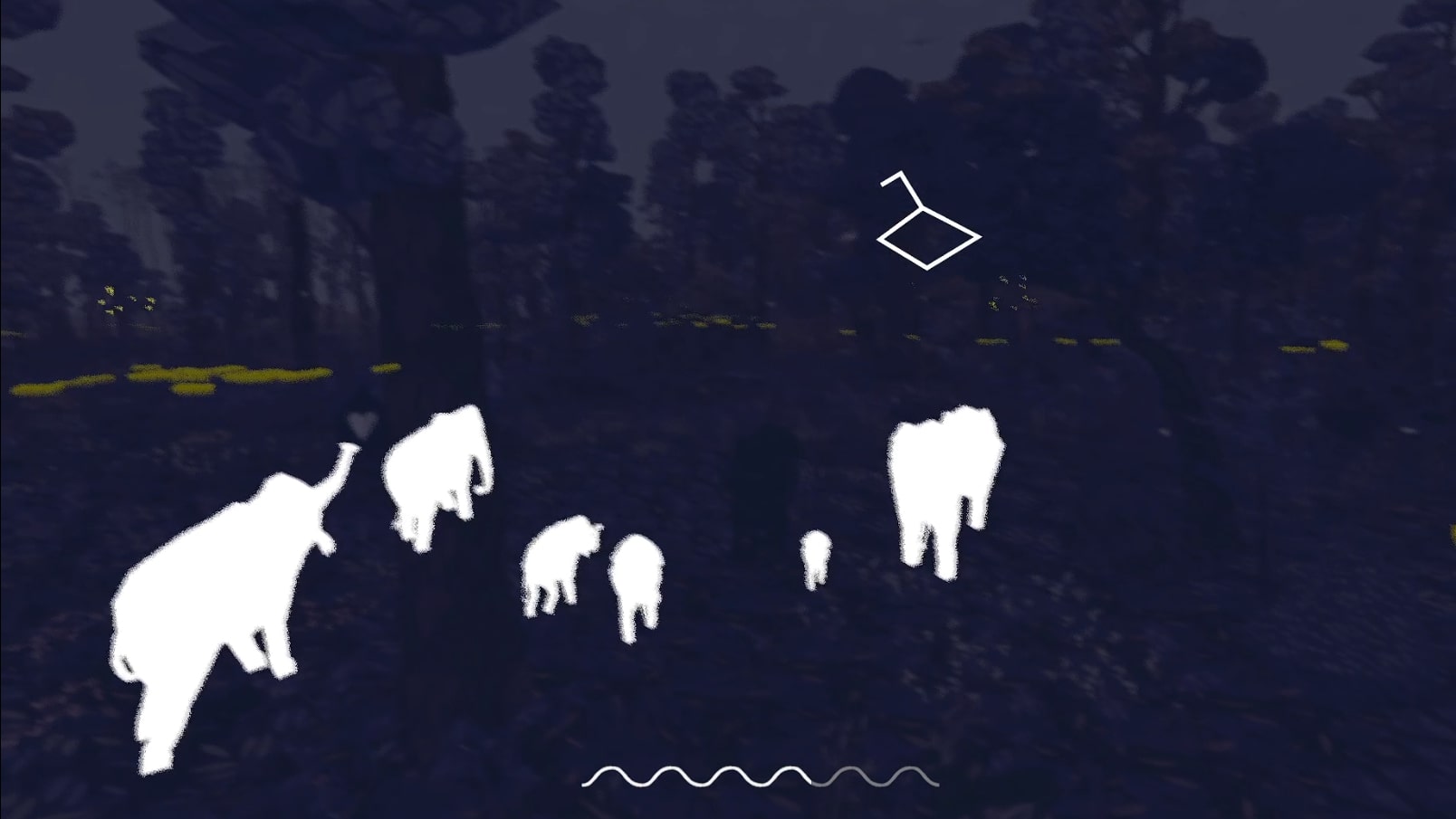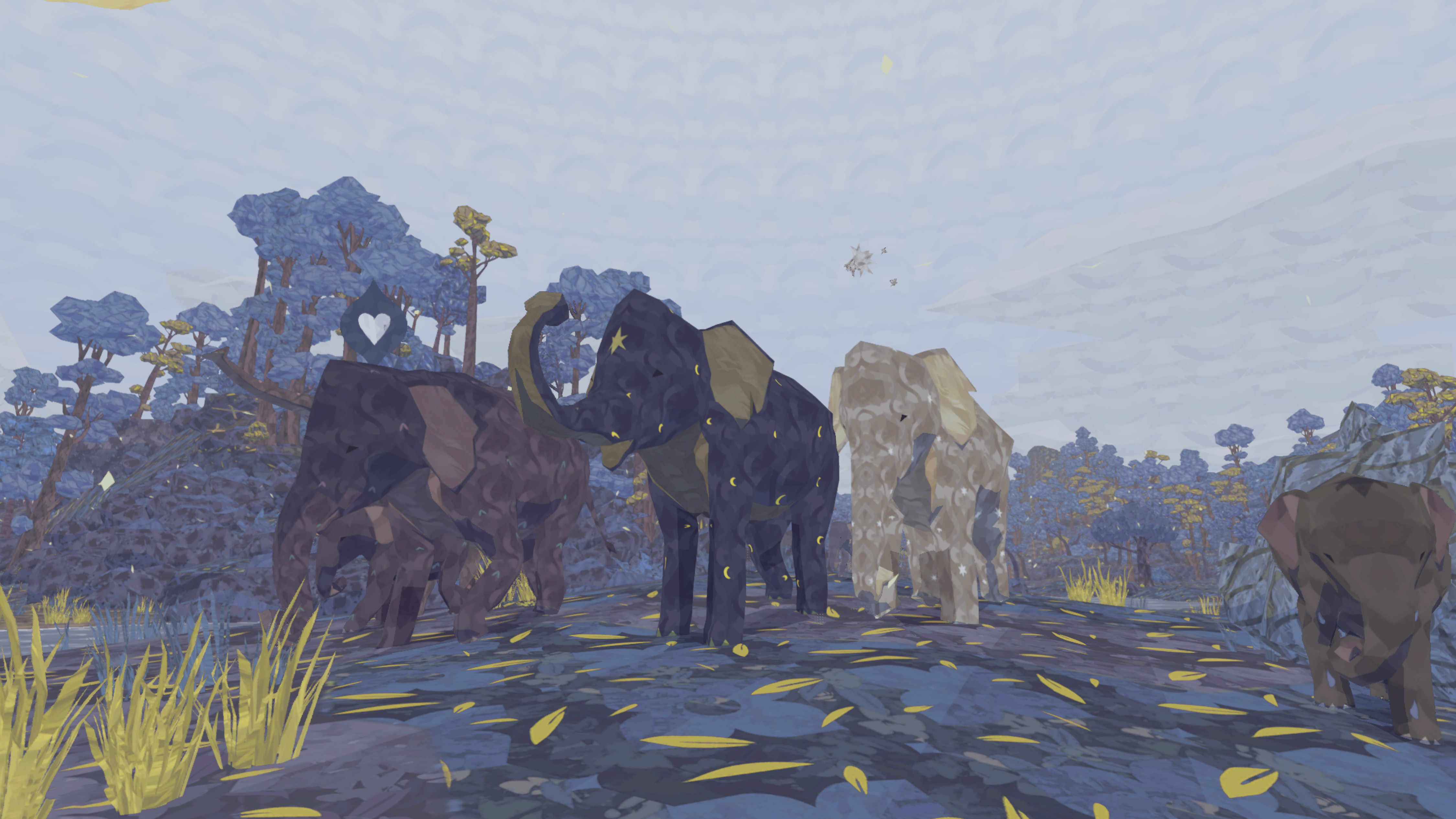Our Verdict
Shelter 3's environment may be pretty, but it's not enough to forgive a game that ultimately feels unfinished.
PC Gamer's got your back
What is it? A survival adventure where you play as a herd of elephants.
Expect to pay TBA
Developer Might and Delight
Publisher Might and Delight
Reviewed on AMD Ryzen 5 3600, 8GB, AMD Radeon RX 5700 XT
Multiplayer? No
Link Official site
Might and Delight is a studio known for making gorgeous—and ruthless—survival games that capture both the awe and ferocity of the wilderness. Or, if you're like me, you might know it as the studio who made that brutal badger sim that made you cry. Well, it seems like the studio is still on a mission to make me bawl my eyes out over adorable creatures with the third installment in the Shelter series, which this time features an elephant herd.
I've been a big fan of the Shelter series ever since the first game, when my badger cub, Patch, was snatched up by a hungry eagle, leaving me emotionally devastated. I had a stronger emotional connection to that badger baby than to any other NPC, it's that maternal connection that the Shelter games are known for.
When starting Shelter 3, being dropped into the studio's distinctly styled patchwork world felt like a return to the familiar. It felt good to be playing a Might and Delight game again after so many years. Unfortunately, that feeling didn't last long, and as I explored more, it quickly became apparent that the newest game in the Shelter series has lost its way.

In Shelter 3, you play as a mother elephant who is leading her herd to a place that will reunite the group with their ancestors. It's world mixes elements of both previous games; the linear story of Shelter 1, and the more open-world structure of Shelter 2. To survive, you'll need to keep your herd well-fed and protect them from danger.
As the herd makes its way across the plains, you're guided by environmental checkpoints that look like stars. Each time you reach one of these checkpoints you'll be given a choice between two paths (usually both treacherous), and after making your decision the next checkpoint will appear, leading you further into the world.
Exploring environments is a highlight of the game, and that's due to Might and Delight's signature art style. Shelter 3 looks like an elegant quilt whose multiple patterns have all been intricately stitched together. Each elephant in your herd has a unique skin pattern and you can tell which calf belongs to which mother because they both share that pattern, like they were cut from the same cloth. It's a lovely touch.

You'll have your fair share of bamboo forests, scorching deserts, and watering holes to navigate through, and one section has you lead the herd through a mountain cave and emerge at a luscious lagoon on the other side. Environments are lovely to travel through and since you're not playing as a predator you can happily frolic with wildebeest, rhino, and antelope without fear of them attacking you. But, as pretty as the world is, problems start to reveal themselves straight from the get-go.
But, as pretty as the world is, problems start to reveal themselves straight from the get-go
Although I had no issues controlling my elephant, I ran into multiple problems with the AI of the herd. Clipping was a constant issue, and the elephants would regularly catch on environmental areas, forcing me to maneuver my elephant so that they would follow me and unclip themselves. There were also problems with getting them to eat the fruit that I had found. You need to charge into a tree to knock down hanging fruit, making them fall onto the ground, but the AI repeatedly did not register that food was there, which, in a survival game, was frustrating. With the AI constantly misbehaving, it almost felt like I had to deal with a group of naughty schoolchildren. Other hiccups I experienced were the nursing command for my calf not working and checkpoints from old runs appearing in new games.
Danger zone
Navigation was also an on-going issue. You can keep track of the next checkpoint by using your 'elephant sense', which makes the screen go dark and illuminates the next environmental destination represented by a symbol. The issue with these points is that many of them took me anywhere but forward—some of them making me backtrack on myself, which feels almost counterintuitive in a game about a nomad group where you have to keep pushing forward. The layout of the world is also confusing. I continually kept running into dead ends and accidentally wandering into dangerous areas that were meant for different chosen pathways. It also didn't help that at each checkpoint, I would always get the same choices regardless of the one I picked before. It just didn't feel like a journey where my choices mattered.

Out of the different paths you can choose, the ones that hint at danger are not that perilous at all. In one area, the challenge was to make it across a blistering desert where there was little food, only for me to run through it and get to safety in no time at all. Another one was described as the "striped death" where you have to keep the herd together to protect your calves from a tiger. The idea sounded pretty cool in concept, only for the tiger AI to keep appearing out of nowhere, with no visual warning, and kill one of the calves as soon as I stepped into the area.
One dangerous path that I enjoyed had me guide my herd through treacherous waters swarming with crocodiles, finding safety on small islands that had been dotted throughout the area. You can see the ridges of the crocs as they swim and, together with the pressure of your herd's slow speed, you need some well-timed walking to get to safety. It's a great sequence and, although the crocodile AI was a bit iffy, it still made for some tense moments.

I think the crux of the problem with Shelter 3 is that there's no real sense of danger. Protecting your herd feels more like a chore than an emotional response and major technical hiccups suck all the intensity and enjoyment out of the game. It's also pretty short, and with a single 'run' taking less than thirty minutes, there's not a lot of time to develop an emotional attachment to any of the elephants. I found that I had finished every route and seen everything at the two-hour mark.
What makes the previous Shelter games shine is their ability to show nature as both awe-inspiring and completely terrifying, but Shelter 3 fails to capture that. It breaks my heart since you can see the ideas and concepts of a great survival game, but the execution just isn't there.
Shelter 3's environment may be pretty, but it's not enough to forgive a game that ultimately feels unfinished.
Rachel had been bouncing around different gaming websites as a freelancer and staff writer for three years before settling at PC Gamer back in 2019. She mainly writes reviews, previews, and features, but on rare occasions will switch it up with news and guides. When she's not taking hundreds of screenshots of the latest indie darling, you can find her nurturing her parsnip empire in Stardew Valley and planning an axolotl uprising in Minecraft. She loves 'stop and smell the roses' games—her proudest gaming moment being the one time she kept her virtual potted plants alive for over a year.



